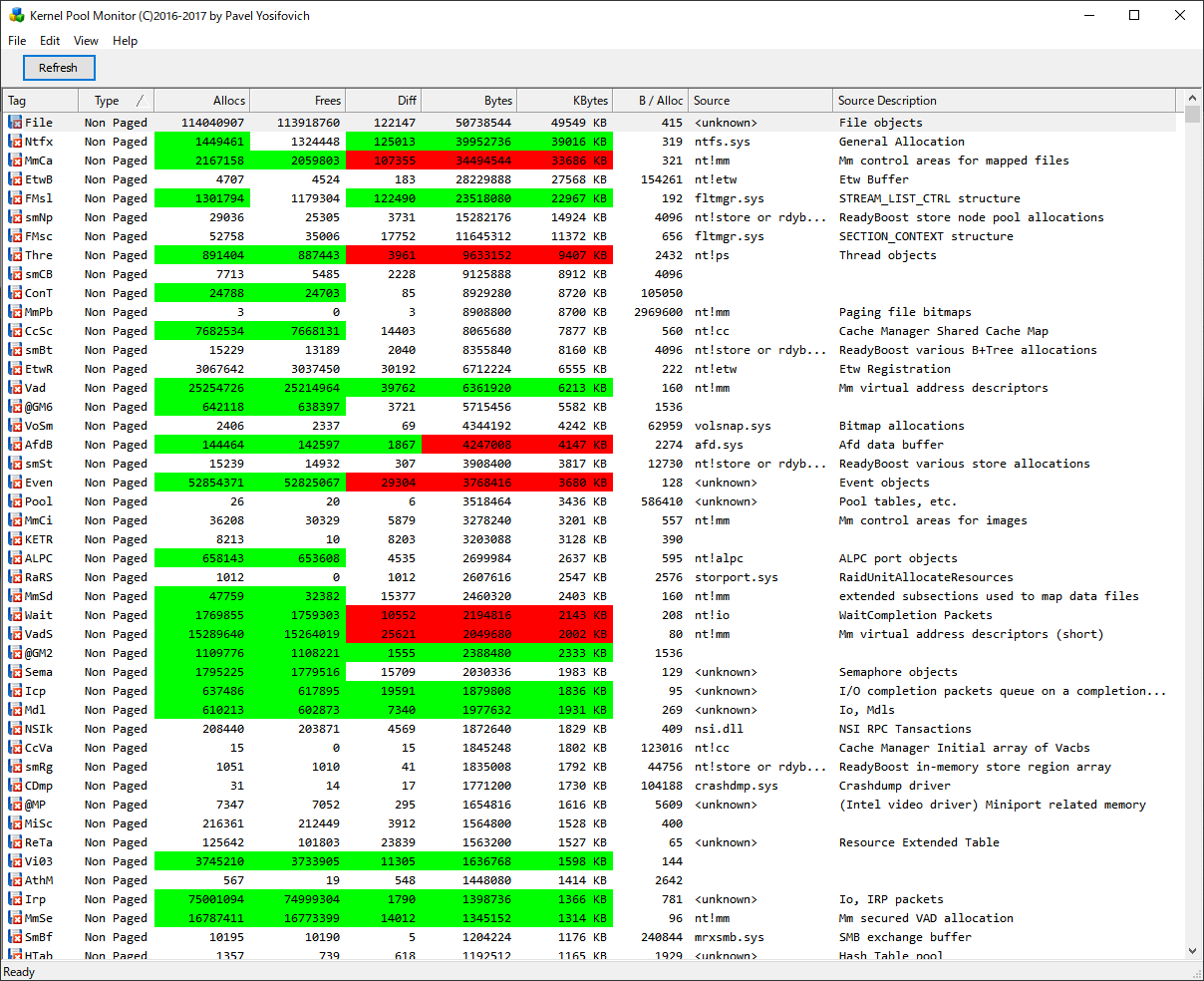

- #Poolmon.exe location how to
- #Poolmon.exe location install
- #Poolmon.exe location driver
- #Poolmon.exe location windows 10
#Poolmon.exe location driver
Poolmon – This is shipped with the Windows Device Driver Kit. As such the Operating System cannot swap such memory from physical RAM to the pagefile as it is classed as in use. Poolmon itself it located in the supporttools folder on your Windows2000/XP/2003 CD, or in the NT Resource Kit.
#Poolmon.exe location how to
Microsoft KB article 177415 shows you how to enable use Poolmon, and to use the Gflags.exe utility to enable Pool Tagging (not required on Windows Server 2003). What is non Pageable RAM?Ĭonsists of memory allocated to processes that either exited abnormally, have not returned the memory allocation to the Operating System for reuse or memory in use by running processes. If you do want to find out the cause of memory issues like this, the tool to start off with is Poolmon.exe (Pool Monitor). In Windows 8.1/10: Press Windows+R to open the Run dialog enter “resmon” and click OK. This can be accomplished in Windows by using the Resource Monitor. To find a memory leak, you’ve got to look at the system’s RAM usage. How do I find a memory leak in Windows 10? In a case where the virtual address has no corresponding physical address, the data is stored in a paging file.

#Poolmon.exe location install
Install PoolMon on the computer you want to test by following the Microsoft product instructions.Paged pool are blocks of memory where the virtual addresses have meaning, but the mapping from virtual to physical page may not be defined. Poolmon.exe is contained in the Microsoft Windows Driver Kit (WDK). The data is grouped by pool allocation tag. Step 7: Fine-Tune and Debug Your Driver based on Testing. Memory Pool Monitor (PoolMon) Memory Pool Monitor (Poolmon.exe) displays data that the operating system collects about memory allocations from the systems paged and nonpaged memory pools and from the memory pools used for Terminal Services sessions.Step 6: Start and Stop data communication.Step 5: Data Communication to your hardware.Step 2: Say Hello to your hardware (In other words, talk to your hardware).Stop PoolMon, wait for 30 minutes, and then restart PoolMon.Poolmon displays the amount of pool storage (both paged and nonpaged) in use. Type the following command and press Enter: The tool for this job is the Memory Pool Monitor, poolmon.exe, which is included in the Windows Support Tools on the Windows Server 2003 CD, or alternatively can be downloaded from the Microsoft Download Centre as part of the Windows Server 2003 Support Tools package.Click Start, Run, type cmd, and press Enter.The following example outlines a procedure for using PoolMon to detect a memory leak: Press B to sort the columns from largest to smallest. Press P until Poolmon displays the second column 'type' and shows the value paged. Support.CAB is located under the SupportTools folder. On the Windows 2000 CD Poolmon.exe is in the Support.CAB file. Locate Poolmon.exe in the SupportDebugplatform folder on the Windows NT 4.0 CD. Download Visual Studio Enterprise 2019. Change to the drive and folder where Poolmon.exe is located. How do I start Poolmon Using Poolmon to Collect Information.Download Visual Studio Professional 2019.
#Poolmon.exe location windows 10
The Windows 10 Software Development Kit (SDK) is automatically included and is displayed in the right-hand Summary pane….Step 1: Install Visual Studio 2019 %WindowsSdkDir%\tools\PnPCpu.exe %WindowsSdkDir%\tools\PnPCpu.exe


 0 kommentar(er)
0 kommentar(er)
